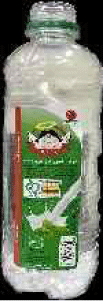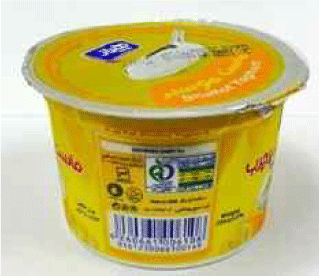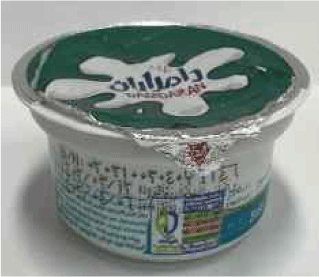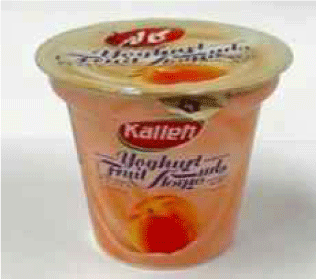서 론
이란의 발효 유제품은 기원전 5,500년 전 수메르(Sumer) 문명에서 그 자취를 확인할 수 있을 정도로 오랜 역사를 자랑하고 있다. 이러한 유제품들은 각 지역의 식재료와 전통적인 발효 기술을 기반으로 여러 형태로 발전되어 왔다. 이 중 요구르트라는 유가공품의 명칭은 코카서스 산맥의 Elbrus 산 남쪽 지역에서 어원을 두고 있다. Elbrus 산은 코카서스 산맥에서 가장 비대한 산으로, 다양한 환경 조건을 가지는 만큼 여러 종류의 미생물이 서식하고 있다. 이들 중 40°C–45°C의 고온을 선호하는 특정 미생물이 산맥을 횡단하는 유목민들의 우유통에 우연하게 옮겨져 유우를 발효시켰을 것으로 추정하고 있다. 터키인들은 이를 두고 “Yogurut”라고 불렀으며, “Yogurut”는 11세기에 들어와서 현재의 이름인 “요구르트(yoghurt; yogurt)”로 변경되었다[1,2].
훗날 요구르트는 발효유제품의 한 분류에 속하여 지리적인 차이, 기후, 농업 생산물의 가용성 등에 따라 다양하게 발전되어 왔다. 특히 이란의 경우 종교 행사나 문화 축제에 맞춰 여러 가지의 발효유제품을 발전시켜 왔다. 이렇게 만들어진 발효제품은 오랜 세월 동안 가족이나 지역사회에 대대로 그 제조법이 계승되었고, 현재까지도 여러 전통 발효식품을 만드는 데 적용되고 있다[3].
이란은 대표적인 이슬람 문화권 국가로 이슬람교의 특별한 식품 규정에 따라 할랄(Halal, حلال, halāl, halaal)과 하람(Haram, حَرَام, ḥarām)으로 발효유 제품을 비롯한 여러 식품들을 분류하고 있다. 여기서 “할랄”은 아랍어로 “허락된”이라는 뜻이며, 이슬람 종교의 식품 규정에 따라 허용되고 허락된 것을 의미한다. 이때 모든 우유와 유제품이 할랄 식품으로 용인되는 것은 아니며, 할랄식품인증기관(Halal Food Authority; halafoodauthority.com)이나 미국이슬람식품영양협회(Islamic Food and Nutrition Council of America; IFANCA)와 같이 각 국가별 이슬람식품영양협회에서 제시된 규격을 따르는 유제품만이 할랄 제품으로 허용된다[4].
-
우유(milk): 순수한 우유는 일반적으로 할랄에 해당되며, 도축 방식이나 특별한 처리가 없는 한, 우유 자체는 할랄 식품으로 간주된다.
-
요구르트(yogurt): 일반적인 요거트도 할랄이지만, 주의해야 할 점은 돼지 유래 첨가물, 예를 들어 돼지 유래 젤라틴(pork gelatin)과 같은 첨가물은 할랄에 해당되지 않는다.
-
치즈(cheese): 대부분의 치즈는 할랄이지만, 돼지 펩신(pepsin)을 사용하여 응고시킨 경우에는 할랄이 아니다.
-
버터(butter) 및 유지(ghee): 이들 제품군은 할랄이며, 간혹 이들 제품에 첨가물이 하람을 사용할 수 있으므로 제품의 성분을 확인하는 것이 중요하다.
그리고 “하람”은 아랍어로 금지한다는 의미를 지니고 있다. 이는 이슬람 종교의 규정에 따라 금지되고 허용되지 않는 것으로 음식뿐만 아니라 도덕적, 윤리적인 행동에도 적용된다. 따라서 돼지고기, 돼지 유래 제품, 알콜, 동물의 피 등과 같은 것은 하람에 해당되며, 할랄 도축 방식에 따라 도축된 동물, 고기 등은 할랄로 분류된다[5].
이에 할랄로 인정된 이란의 발효유제품을 소개하기 앞서 해당 국가에서 소비되어 온 다양한 발효유제품들을 Table 1에서 소개하고자 한다.
현재는 여러 종류의 발효유가 이란 내에서 대량생산되어 판매되고 있는데, 대표적으로 몇 가지의 제품을 소개하면 다음과 같다(Table 2).
이란에서 전통적으로 만들어진 발효유제품에는 다양한 유산균이 존재하는 것으로 보고되었는데, Lactobacillus acidophilus, Lacticaseibacillus casei, Lacticaseibacillus rhamnosus, Lactobacillus delbrueckii, Streptoccus thermophilus, Lactococcus lactis 그리고 Lactiplantibacillus plantarum 등이 발효유에서 분리되었다[6,7].
본 연구는 한국식품연구원에서 이란 발효유 시료를 제공받아 각 제품의 기본적인 특성을 살펴보고 우유 발효능이 우수한 유산균을 분리하였으며, 분리된 유산균주의 동정을 수행하였다.
재료 및 방법
8종 시료의 pH는 pH meter(Mettler-Toledo, Switzerland)를 사용하여 측정하였으며, 가용성 성분은 시료를 0.45 μm로 여과한 여과액을 refractometer(Atago, Japan)를 사용하여 °Brix(%)로 표시하였다.
시료에 함유되어 있는 유산간균과 유산구균의 검출을 위하여 pH가 5.2로 조정된 MRS 배지와 M17 배지를 사용하였다. 또한 Lactobacillus acidophilus의 검출을 위하여 dextrose를 maltose로 대체한 MRS-maltose 배지를 사용하였으며, bifidobacteria를 검출하기 위하여 BL 배지에 항생제 용액을 첨가하여 사용하였다. 분리원을 L-cystein과 Tween-80이 첨가된 phosphate buffer(3 mM KH2PO4-4 mM Na2HPO4; pH 7.0)에 희석하여 각 선택배지에 도말한 후 유백색의 집락을 계수하였다. 각 배지에서의 배양 조건은 Table 3에 나타내었다.
| Medium | Incubation temp (°C) | Incubation time (hr) | Condition | Reference |
|---|---|---|---|---|
| MRS (pH 5.2) agar | 37 | 48 | Aerobic | [8] |
| MRS-maltose agar | 37 | 48 | Aerobic | [9] |
| M17 agar | 43 | 24 | Aerobic | [10] |
| BL-NPNL agar | 37 | 72 | Anaerobic | [11] |
각 선택배지에서 얻어진 분리원에 대하여 Gram 염색과 catalase test를 실시하였으며, catalase 활성 유무는 3% H2O2를 사용하여 평가하였다. 우유 응고성은 0.25% yeast extract가 첨가된 10% 환원 탈지유를 제조한 다음, 분리원 배양액 1%(v/v)을 접종하여 37°C에서 24시간 배양하여 탈지유 응고 여부와 최종 pH를 조사하였다. 분리원의 동정을 위하여 분리 균주의 16S rRNA 유전자 염기서열 분석을 실시하였다. 분리한 균을 각각 Universal primer 27F(5'-AGAGTTTGATCATGGCTC AG-3')를 이용하여 증폭한 후 분리 균주의 염기서열을 분석하였다(SolGent, Korea). 분석 결과는 GeneBank Database와 상동성을 비교하여 확인하였다.
결과 및 고찰
발효유 시료의 pH는 3.53–4.19의 범위로 제품에 따라 약간의 차이가 있었다. 가용성 성분은 7.3–17.9 °Brix로 제품에 따라 많은 차이를 나타내었다(Table 4). Refractometer를 이용한 Brix 측정은 주로 과일의 당도를 평가하는데 사용되지만, 많은 유가공회사에서 유제품의 가용성 성분을 평가하고자 주로 이용한다.
| Sample | pH | °Brix (%) |
|---|---|---|
| A | 3.55 | 7.5 |
| B | 3.53 | 7.3 |
| C | 4.18 | 12.1 |
| D | 4.19 | 10.4 |
| E | 4.08 | 17.9 |
| F | 3.97 | 17.5 |
| G | 4.16 | 14.3 |
| H | 4.00 | 14.1 |
우유의 가용성 성분은 약 12 °Brix 정도의 값을 나타내는데 시료 A의 경우 7.5 °Brix를 보여 물로 희석한 제품임을 알 수 있었으며, 17 °Brix 이상의 제품들은 요구르트의 신맛을 감소시키기 위하여 당류나 과즙, 과일잼 등을 첨가한 것으로 나타났다. 14 °Brix 정도의 값을 보인 제품들은 소량의 당류 또는 다른 향신료 등을 첨가한 것으로 추정되었다.
Noori et al.은 드링크 타입인 Doogh(yogurt drinking)와 Kashk 두 종류의 발효유를 이란 지역 4개 마을에서 전통적으로 제조된 것을 수거하여 조사한 결과, 액상발효유인 Doogh의 pH는 3.12–3.6의 범위를 보였으며, Kashk의 경우에는 3.85–4.11로 Doogh보다 높은 pH를 보였다고 보고하였다[12].
이와 같이 지역적으로 차이를 보인 것은 발효에 사용된 원유의 종류, 제조방법, 건조 및 저장 조건의 차이에서 기인된 것으로 전통 식품이 표준화가 이루어질 필요가 있음을 시사한다.
Table 5는 각 선택배지에서의 생균수를 나타낸 것이다. MRS-pH 5.2 배지는 주로 L. delbruekii subsp. bulgaricus 등의 검출을 위하여 사용하는데 본 실험에서는 시료 H에서만 3.64 log CFU/mL로 낮은 생균수를 나타내었다. MRS-maltose 배지는 L.acidophilus, L. brevis, L. plantarum 등의 검출이 가능하며 Streptococcus thermophilus는 생육이 불가능하다. MRS-maltose 배지에서는 8개 시료 중 2개의 시료에서만 검출되었으며 시료 E는 3.86 log CFU/mL, 시료 F는 2.48 log CFU/mL로 나타나 매우 낮은 생균수를 보였다. 우리나라의 경우 발효유(7 log; 107 CFU/mL)와 농후발효유(8 log; 108CFU/mL)의 총유산균 규격만 있으며 유산간균의 규정은 따로 정해져 있지 않지만 통상적으로 유산간균의 함량은 5–8 log CFU/mL 수준이다.
유당이 함유된 M17 배지의 경우 Streptococcus 속(genus)의 생균수를 평가하는데 시료 A와 B를 제외한 다른 모든 시료에서 유산균 집락이 검출되었으며 제품 중 4.73–8.54 log CFU/mL 의 분포로 유산균이 존재하여 시료 별 차이가 많았다. 그러나 bifidobacteria 검출을 위한 BL-NPNL 배지에서는 별다른 집락이 검출되지 않아 8종의 제품 내에 절대혐기성세균인 bifidobacteria가 없는 것으로 판단하였다.
Gram 염색과 catalase 활성을 실시하였으며, catalase 활성은 3% H2O2를 사용하여 평가하였다. 우유 응고성은 0.25% yeast extract가 첨가된 10% 환원 탈지유를 제조한 다음, 분리원 배양액 1% (v/v)을 접종하여 37°C에서 24시간 배양하여 탈지유 응고 여부를 판단하였다.
각 선택배지에서 얻어진 분리원에 대하여 Gram 양성, catalase 활성 음성의 특성을 지닌 총 130개의 집락을 선별하였으며, 이 중 우유 응고 능력이 우수한 20개의 유산균을 대상으로 16S rRNA 유전자 염기서열 분석을 실시하였다(Table 6). 10% 탈지분유의 pH는 18시간 배양 후 3.63–4.46의 범위를 보였으며 집락은 각각 Streptococcus thermophilus, Lactobacillus delbrueckii subsp. sunkii, Lactobacillus delbrueckii subsp. indicus, Lactiplantibacillus plantarum, Lacticaseibacillus rhamnosus, Levilactobacillus brevis의 유산균으로 확인되었다. 일부 제품에서는 Gram 음성 오염균인 Flavobacterium fluminis도 검출되었으나, 추가적인 실험에는 제외하였다.
Streptococcus thermophilus는 젖산을 생성하는 주요 발효균으로 국내 발효유제품에서 가장 많이 사용되며 제품의 종류에 따라 다르지만 통상적으로 107–109 CFU/mL 수준으로 함유되어 있다. 이란 발효유제품 시료에서도 Streptococcus thermophilus가 많이 검출되었지만 총 생균수는 국내 제품보다 낮게 측정되었다.
Nakhjavani et al.은 요구르트, 치즈 및 우유를 포함한 이란 유제품에서 Streptoccus thermophilus, Streptococcus lactis (Lactococcus lactis로 재분류됨), Streptoccus diacetylactis(Lactococcus lactis subsp. diacetylactis로 재분류됨), 및 Streptoccus fecalis(Enterococcus faecalis로 재분류됨)를 각각 분리하였다[7]. Rosanzadeh et al.은 이란의 4개 지역에서 수집된 60개의 요구르트 샘플에서 137개의 유산균을 분리하였는데, 일부가 S. thermophilus와 S. acidominimus로 밝혀졌다고 보고하였다[13]. Lactobacillus delbrueckii는 이란의 5개 지역에서 제조된 요구르트에서 존재하는 것으로 나타났으며[6], 다른 4개 지역에서 수거한 요구르트 시료에서도 Lactobacillus delbrueckii가 분리되는 것으로 발효유제품에 많이 사용되고 있는 유산균임을 알 수 있었다[7].
Lactobacillus delbrueckii는 현재 bulgaricus, delbruekii, indicus, jakosenii, lactis, sunkii 의 6개 아종(subspecies)으로 분류되는데 본 연구에서는 sunkii와 indicus 두 개의 아종만이 검출되었다. Lactobacillus delbrueckii subsp. bulgaricus는 요구르트에 사용되는 대표적인 유산균으로[13], 국내에서도 요구르트 발효에 많이 사용된다. 유럽과 북미지역에서는 이 균이 들어가야만 요구르트로 인정하기도 한다. 그러나 본 8개 시료에서는 Lactobacillus delbrueckii subsp. bulgaricus는 검출되지 않았고 단지, 2개의 시료에서 Lactobacillus delbrueckii subsp. sunkii와 Lactobacillus delbrueckii subsp. indicus만이 검출되었다. Lactobacillus delbrueckii subsp. lactis는 주로 치즈에서 발견되며[14], Lactobacillus delbrueckii subsp. delbruekii는 유당 발효능이 약하기 때문에 발효야채에, Lactobacillus delbrueckii subsp. jakobsenii는 발효 알콜음료에서 발견되었다[15]. Lactobacillus delbrueckii subsp. sunkii는 일본의 전통 무염 장아찌인 순끼(Sunkii)에서 처음 발견된 균으로 야채발효 식품에서 흔히 존재한다. 이란 발효유제품에서 이 균이 분리된 것은 아마도 이란 발효유에 채소와 여러 종류의 허브를 사용하기 때문인 것으로 생각되었다. Lactobacillus delbrueckii subsp. indicus는 인도 지역의 발효유에서 처음 보고된 유산균으로 기후가 온화한 중국 지역의 버팔로 젖으로 만든 발효유에서도 발견되었다[16–18]. 이란 발효유제품에서 Lactobacillus delbrueckii subsp. indicus를 분리한 것은 아마도 본 연구에서 최초일 것이다.
Lactiplantibacillus plantarum은 이란 발효유제품에서 흔히 분리되는 유산균으로 Ebrahimi et al.은 2010년 요구르트 및 치즈 샘플로부터 L. plantarum을 분리하였으며[19], RoushanZadeh et al.은 원유와 요구르트에서 L. plantarum를 분리했다고 보고하였다[13]. Emami et al.도 Isfahan 지역의 전통 요구르트에서 L. plantarum을 분리하였으며, Haghshenas et al.은 Khorasan-e-Razavi 지역의 다양한 요구르트와 원유에서 L. plantarum을 분리하였다고 보고하였다[19,20]. 이외에도 이란의 다른 지역의 요구르트에는 L. brevis, L. casei,L. fermentum, L. helveticus, L. paracasei, L. pentosus, L. rhamnosus 등의 유산균이 다양하게 분리되었다[21,22].




